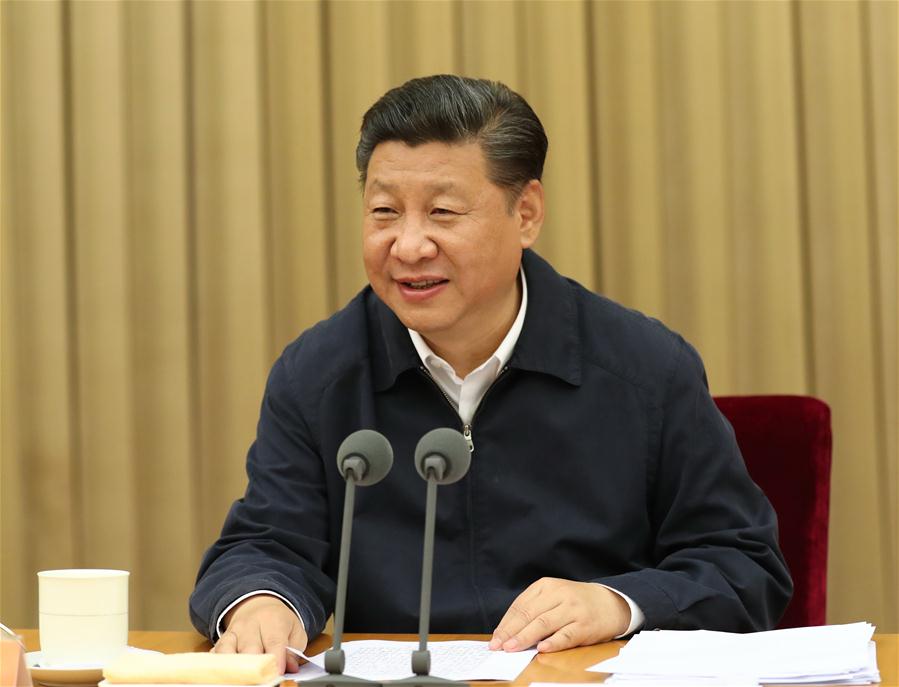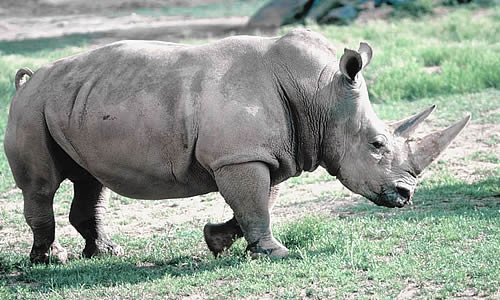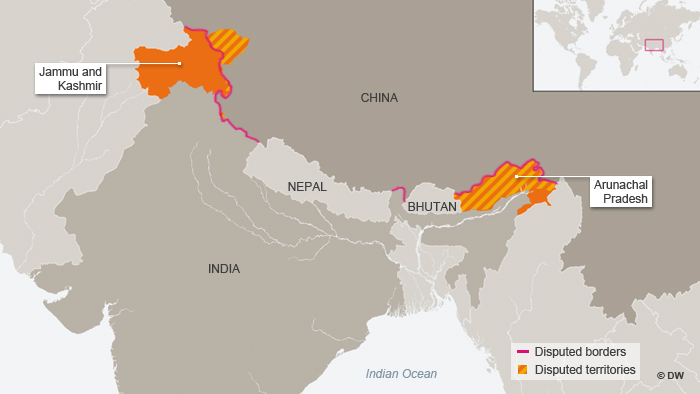
 Xi to Dominate the 19th CPC Congress
Xi to Dominate the 19th CPC CongressOne of the key events leading up to the 19th Communist Party of China (CPC) Congress took place in Beijing this week as China's political elites--including cabinet ministers, central government agency heads, provincial party secretaries and governors--gathered to hear President Xi Jinping expound on the major policy directions for the next five years. This meeting cemented the rhetoric of his political and ideological agenda for China.
Xinhua has described the July 26-27 meeting of senior cadres a "tone-setting" meeting for the 19th Party Congress, during which Xi's will be inaugurated for a second five-year term. All signs are pointing to a further consolidation of power---from setting the economic growth agenda to removing a senior official rumored to be a possible successor; from dictating the restructuring of the country's armed forces to pushing his signature "Belt & Road Initiative." Domestically he rallied support around the so-called "Chinese Dream," a social and economic agenda aimed at improving people's livelihood. Internationally, he has been pushing for a more muscular foreign policy, hoping for a global role compatible with China's newly gained economic and political clout.
Unlike the 18th Party Congress where he nominally rose to the top, Xi is expected to dominate the agenda of the Congress this time by deciding on the lineup of the top echelon of the leadership, and adding his political doctrine to the party constitution.
The meeting July 26-27 was an opportunity for senior officials--of which many are already CPC Central Committee members and delegates to the Party Congress--to pledge loyalty to him, as the South China Morning Post describes, citing multiple Chinese scholars. Premier Li Keqiang reiterated this pledge to loyalty, telling senior officials that they should study Xi's speech, and according to Xinhua, "follow its spirit both in thoughts and actions, and stay highly consistent with the CPC Central Committee with Comrade Xi at its core."
 The Two Faces of China's Economy: Risk and Growth
The Two Faces of China's Economy: Risk and GrowthChina's better-than-expected economic performance of 6.9 percent GDP growth and a recovery of corporate profits in the first half of the year has offered the central government greater policy leverage to push reforms. According to Bloomberg, several of China's policy moves to encourage domestic consumption also saw positive gains: services accounted for 54.1 percent of GDP value in the first half of the year, and consumption contributed 63.4 percent to GDP growth. China Daily reported that the country will seek a balance between stable growth and risk prevention in the second half of the year, according to a senior official, indicating that the country is willing to tolerate slower growth to push reforms and curb systemic financial risks.
What are some of the major financial risks? In the last issue of China This Week, we highlighted two new buzzwords that the financial reformers are using in China: "black swans" and "grey rhinos." While black swans refer to events that a rare and difficult to predict, grey rhinos, according to The People's Daily (link in Chinese) are considered to be risks that are highly probable, yet often ignored. For many financial observers in the West, the potential risk of China's grey rhinos have been discussed extensively: local government debt, high real estate prices, over-leveraged state-owned enterprises, and shadow banking.
China's police chief, Guo Shengkun highlighted another risk: the potential for social instability from illegal get-rich-quick schemes. According to the South China Morning Post, "Monetary easing in the past decade and a fragmented financial regulatory framework have led to a mushrooming of fraudulent investment programs, spreading quickly online and luring millions of mainland investors to put down their savings for the promise of high returns."
 The Continuing China-Bhutan-India Border Standoff
The Continuing China-Bhutan-India Border StandoffMuch of the intrigue surrounding the continued standoff at Doklam, a disputed boundary between Bhutan and China, has been on the swelling ambitions of India and China, as hard-line rhetoric has persisted from both sides. It seems that Bhutan is caught in the middle, and in a press release, Bhutan's Foreign Ministry said that China's "construction of the road inside Bhutanese territory is a direct violation of the agreements."
Adding to this issue's intractability, the 1890 border agreement in question "was between two now-defunct empires, British India and China's Qing dynasty, that put the border in different places. One gives Bhutan control of the area — the position that India supports — and the other China," according to the New York Times. In an very thorough piece for The Diplomat, Ankit Panda further explores the geography in question. "In the case of Doklam, there is indeed a continuous ridge-line that runs from the current tri-boundary point between India, Nepal, and China to the area at the center of the current standoff. However, as the thick red line on the map above demonstrates, the ridge line appears to terminate at Batang-la, the point India and Bhutan claim as the tri-boundary point, even though the convention's text explicitly says 'Mount Gipmochi.' Effectively, this puts the first sentence of the convention's first article in conflict with the second and is likely an artifact of poor survey work in the late-19th century."
In China-US Focus, Brahma Chellaney writes that this land dispute is in fact part of a larger theme in China's growing military assertiveness. "In the way an increasingly muscular China — without firing a single shot — has waged stealth wars to change the status quo in the South and East China seas, it has been making furtive encroachments across its Himalayan frontiers with the intent to expand its control meter by meter, mile by mile."
Devesh Kapur in Project Syndicate writes about deeply personal humiliation on both sides that is contributing to this standoff. "Despite this acute awareness of the enduring impact of its own humiliations, China often fails to recognize how its own past actions might have spurred similar feelings in others. Its 1962 defeat of India was the culmination of a decade-long competition for leadership of the newly independent countries that had emerged from decolonization. It therefore amounted to a devastating blow to India's aspirations to be the undisputed leader of the Non-Aligned Movement."
Another article in China-US Focus from Su Jingxiang attempts to outline a path forward for both India and China to back down and "preserve Chinese-Indian friendship," but also ominously warns that if dialogue and consensus are not tenable, "It is important to remind India that if it forces China to fight a limited war, China is determined to win."
 On This Day in Chinese HistoryOn July 28th, 1976, a 7.8 magnitude earthquake struck Tangshan, an an industrial city in China's northern Hebei along a major fault line. The number of deaths initially reported by the Chinese government was 655,000, but this number has since been stated to be around 240,000 to 255,000. It is still believed to be the largest earthquake of the 20th century by death toll. After the major earthquake, China refused outside international aid, and instead Shanghai sent 56 medical teams to Tangshan, assisted too by the PLA. Rebuilding infrastructure started immediately in Tangshan, and the city was completely rebuilt. Today Tangshan city is home to nearly three million people and is known as "the Phoenix City."
On This Day in Chinese HistoryOn July 28th, 1976, a 7.8 magnitude earthquake struck Tangshan, an an industrial city in China's northern Hebei along a major fault line. The number of deaths initially reported by the Chinese government was 655,000, but this number has since been stated to be around 240,000 to 255,000. It is still believed to be the largest earthquake of the 20th century by death toll. After the major earthquake, China refused outside international aid, and instead Shanghai sent 56 medical teams to Tangshan, assisted too by the PLA. Rebuilding infrastructure started immediately in Tangshan, and the city was completely rebuilt. Today Tangshan city is home to nearly three million people and is known as "the Phoenix City."
Prepared by China-US Focus editorial teams in Hong Kong and New York, this weekly newsletter offers you snap shots of latest trends and developments emerging from China every week, while adding a dose of historical perspective.
- 2017-07-21 A Steely Comprehensive Economic Dialogue
- 2017-07-14 South China Sea Arbitral Award after One Year
- 2017-07-07 Now is the Trump Honeymoon with China Over?
- 2017-06-30 China Passes New Intelligence Law
- 2017-06-23 The End of China’s Honeymoon with Trump & Diplomatic and Security Dialogue
- 2017-06-16 Climate Change and Reliable Data Dealt Blows
- 2017-06-09 India, Pakistan formally welcomed into the Shanghai Cooperation Organization
- 2017-06-02 Once Partners in Fighting Climate Change, Trump Retreats, China Stays Steady on Paris Climate Accord
- 2017-05-26 Chinese Missile Frigates Confronts USS Dewey as U.S. Resumes FON Operations in South China Sea
- 2017-05-19 The Belt and Road Forum Concludes Leaving Behind Mixed Reactions
- 2017-05-12 Beijing, Washington Reach First Trade Deal Under 100-day Plan
- 2017-05-05 Degree of Autonomy Decaying in Hong Kong?
- 2017-04-28 Aircraft Carriers, Submarines, and Jetliners: Now Made in China
- 2017-04-21 Green Cards & Red Lines
- 2017-04-14 U.S Beef for Chinese Chicken? More Hollywood Films in China?
- 2017-04-07 The Xi-Trump Summit in Florida
- 2017-03-31 Google Makes a Comeback to China?
- 2017-03-24 Xi and Tillerson Trade Phrases
- 2017-03-17 Sec. Tillerson Visits Asia ahead of Xi-Trump Summit
- 2017-03-10 Defending China's Defense Budget